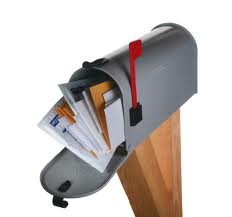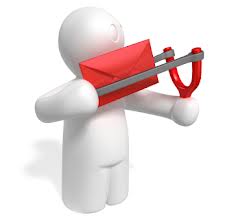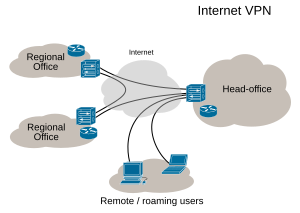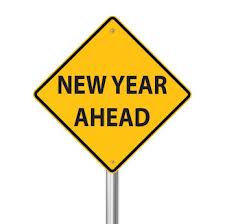 When I resigned from my last job in May 2011 to start my non-profit consulting practice, my partner and I sat down and reviewed our charitable giving portfolio. We made the decision to temporarily stop giving to certain organizations because our household income was about to drop. Needless to say, I showed up on a number of LYBUNT (aka Last Year But Unfortunately Not This Year) donor database reports and we’re still digging out from underneath the avalanche of direct mail.
When I resigned from my last job in May 2011 to start my non-profit consulting practice, my partner and I sat down and reviewed our charitable giving portfolio. We made the decision to temporarily stop giving to certain organizations because our household income was about to drop. Needless to say, I showed up on a number of LYBUNT (aka Last Year But Unfortunately Not This Year) donor database reports and we’re still digging out from underneath the avalanche of direct mail.
Today, I want to share a few things from a donor’s perspective that might be helpful as you put together your year-end lapsed donor strategies.
One of the charities affected by my decision to change jobs was the Human Rights Campaign (HRC). Throughout the years, my partner was a Federal Club member, and I was a member of their Partners monthly giving program.
This big, bad national non-profit advocacy organization has a very slick direct mail program and a hundred thousand or more individuals as donors. In fact, it is so big that in addition to calling me by my first name, it is common for this agency to reference me by my membership number (which truth be told always makes the hair on the back of my neck bristle).
 Two months ago on a lazy Saturday afternoon, my partner was canning vegetables from our garden in our kitchen and I was opening mail that had built up in our mailbox. For what seemed to be the umpteenth time since we made the decision to temporarily withdraw our support from HRC, I opened another “Won’t you please come back” letter from this organization.
Two months ago on a lazy Saturday afternoon, my partner was canning vegetables from our garden in our kitchen and I was opening mail that had built up in our mailbox. For what seemed to be the umpteenth time since we made the decision to temporarily withdraw our support from HRC, I opened another “Won’t you please come back” letter from this organization.
The letter spurred a kitchen discussion that resulted in a decision to re-join HRC’s monthly giving program, albeit at a smaller level (but with the intent of growing our commitment in the next year or two).
As you might expect, we received a gift acknowledgement letter a few weeks later that read as follows:
“On behalf of the Human Rights Campaign’s Board, staff and volunteers, I want to thank you for joining our Partners program with a monthly contribution of $10. The leadership that you have taken . . .”
Yada, Yada, Yada. It was a typical computer generated gift acknowledgement letter, and one that I’ve read countless times throughout my life. It was technically proficient and everything I expected from this world-class direct mail giant. It made me feel good about our decision to re-engage with an organization that we had been supporting for a decade.
Unfortunately, this good feeling didn’t last very long because a few weeks later, I received another letter from HRC and this time the letterhead said it was “From The Desk Of” Cathy Nelson, who is the organization’s Vice President of Membership. I opened the letter expecting more appreciation and thanks, but my heart sunk when I read the following first few sentences:
“The news couldn’t have come at a worse time for the lesbian, gay, bisexual and transgender civil rights movement. I wanted to write to you personally as I have heard you have not yet renewed your Human Rights Campaign membership. We are counting on our active members in this critical year . . .”
 To say that I felt punched in the gut might sound a little dramatic, but it isn’t far from the truth. In the first 10 seconds, here is want went through my head as a donor:
To say that I felt punched in the gut might sound a little dramatic, but it isn’t far from the truth. In the first 10 seconds, here is want went through my head as a donor:
- OMG, did I forget to mail our check? Where is that gift acknowledgement letter confirming our re-enrollment in the monthly giving program?
- I felt guilty upon reading the words “the news couldn’t have come at a worse time . . .“
- I felt angry because they were making our charitable giving decision seem like it was all about them, when it reality it was all about our new economic reality.
- I felt manipulated and confused.
Any amateur fundraising professional and volunteer probably knows that these emotions and thoughts are not what you want to invoke when trying to reactivate a lapsed donors. If your non-profit organization is committed to transforming its resource development program to a donor-centered fundraising paradigm, then you need to walk away from this blog post dedicated to not replicating this bad example provided by HRC.
Over the next few days, I will blog about LYBUNT donors and provide a few tips I hope you will find helpful as you design your year-end lapsed donor appeals. So, stay tuned for more!
Have you ever been rubbed the wrong way by a lapsed donor appeal? Or has a lapsed donor ever reacted to one of your appeals and provided you with some feedback? How did you respond? Did it change your approach? If so, how? Please scroll down to the comment box and share your stories or thoughts. We can all learn from each other.
Here’s to your health!
Erik Anderson
Founder & President, The Healthy Non-Profit LLC
www.thehealthynonprofit.com
erik@thehealthynonprofit.com
http://twitter.com/#!/eanderson847
http://www.facebook.com/eanderson847
http://www.linkedin.com/in/erikanderson847
























